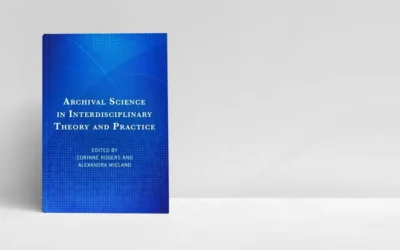Records Recovery for Vital Records
Margot Note
Disaster recovery means the readiness to recover records after the disaster has struck. The planning for such an eventuality is part of disaster mitigation, but carrying it out is part of disaster recovery.
Often connected to treatments for wet or contaminated paper records, similar issues arise with digital records. For example, if digital records are only maintained on local computers or removable media, and the computers and media have been in water for several days, an organization may not be able to recover records from the damaged media. Therefore, having procedures for handling damaged media and then training on those procedures is part of the disaster recovery preparedness.
Continuity of Operations (COOP)
COOP is an initiative from the last 30 years and is rooted in the need to restore systems in some rational order following a disaster. Many organizations have a COOP plan to address how the organization will respond to emergencies, from a hacker attack to an extended power outage to the destruction of a building. The idea of the COOP plan is to sort out how the organization will go about restoring services to its employees and the public. COOP plans triage information resources into those needed immediately, those that can wait for at least a brief period before being restored, and those that can be brought back later. COOP focuses on getting essential data and applications up and running as soon as possible. While programs and IT lead the COOP planning, archivists and records managers should be involved too.
During the COVID-19 pandemic, organizations also had to pivot quickly to react to remote work environments and changing circumstances. While catastrophic data loss was not a problem, long-term restrictions to access affected the continuity of standard operations. Although no one could have predicted the pandemic and its consequences, organizations that had updated COOP plans may have been able to react quicker and maintain their day-to-day operations easier.
Records and Data Backup
Backup is simply the most common form of disaster mitigation. It is necessary to have a retention policy for backups and to follow that policy. Backups are subject to search for discovery responses, and keeping old ones around can be a significant liability. IT staff want to keep backups long-term to allow the regeneration of older applications and data, but that can increase risk to the organization.
IT staff frequently think of backups for recovery purposes as the same as a recordkeeping copy to cover the long-term maintenance of records. Unfortunately, that is not the case. System or security backups are system-dependent. For example, one backup system will not read another backup system’s data.
Even with organizations with low legal risks, having backups for extended periods can result in costs to search in litigation. Cost figures vary, but costs in the tens (if not hundreds) of thousands of dollars range are not uncommon depending on the number of backups that need to be reconstituted and searched. Even if nothing incriminating is found, the organization is still out the cost of searching the data.
Incredibly, some organizations have found it cheaper to settle with the opposing party than to conduct the searches of backups for email and other documentation, even though they knew they could eventually win the suit. Word spread about their practices, and eventually instituted a records management program, but that was after millions in settlement costs.
Prepare and Respond
Sudden or unexpected incidents, natural or manufactured, can damage records and their storage facilities. A well-planned response is vital to reduce the level of damage and loss. Archivists, records managers, and their colleagues need to prepare for and manage records emergencies. By preparing with records emergency planning, risk management, and training, they can respond with damage assessment and utilizing records recovery services to protect their vital records.
Margot Note
Margot Note, archivist, consultant, and Lucidea Press author is a regular blogger and popular webinar presenter for Lucidea, provider of ArchivEra, archival collections management software for today’s challenges and tomorrow’s opportunities. Read more of Margot’s posts here.
Similar Posts
Ensuring Long-Term Access to Digital Archives
Long-term preservation is essential to ensure digital archives remain accessible and usable.
5 Best Practices for Personal Digital Archiving
Archivists have developed best practices for organizing and maintaining personal digital archives, safeguarding digital legacies for future generations.
Interview with the Editors: Wieland and Rogers on Interdisciplinary Archival Science
Alexandra Wieland and Corinne Rogers co-edited Archival Science in Interdisciplinary Theory and Practice. My interview with them is below.
The Importance of Personal Digital Archiving (Plus Steps to Get Started)
Archivists often help individuals manage and preserve digital files of personal significance.




Leave a Comment
Comments are reviewed and must adhere to our comments policy.
0 Comments